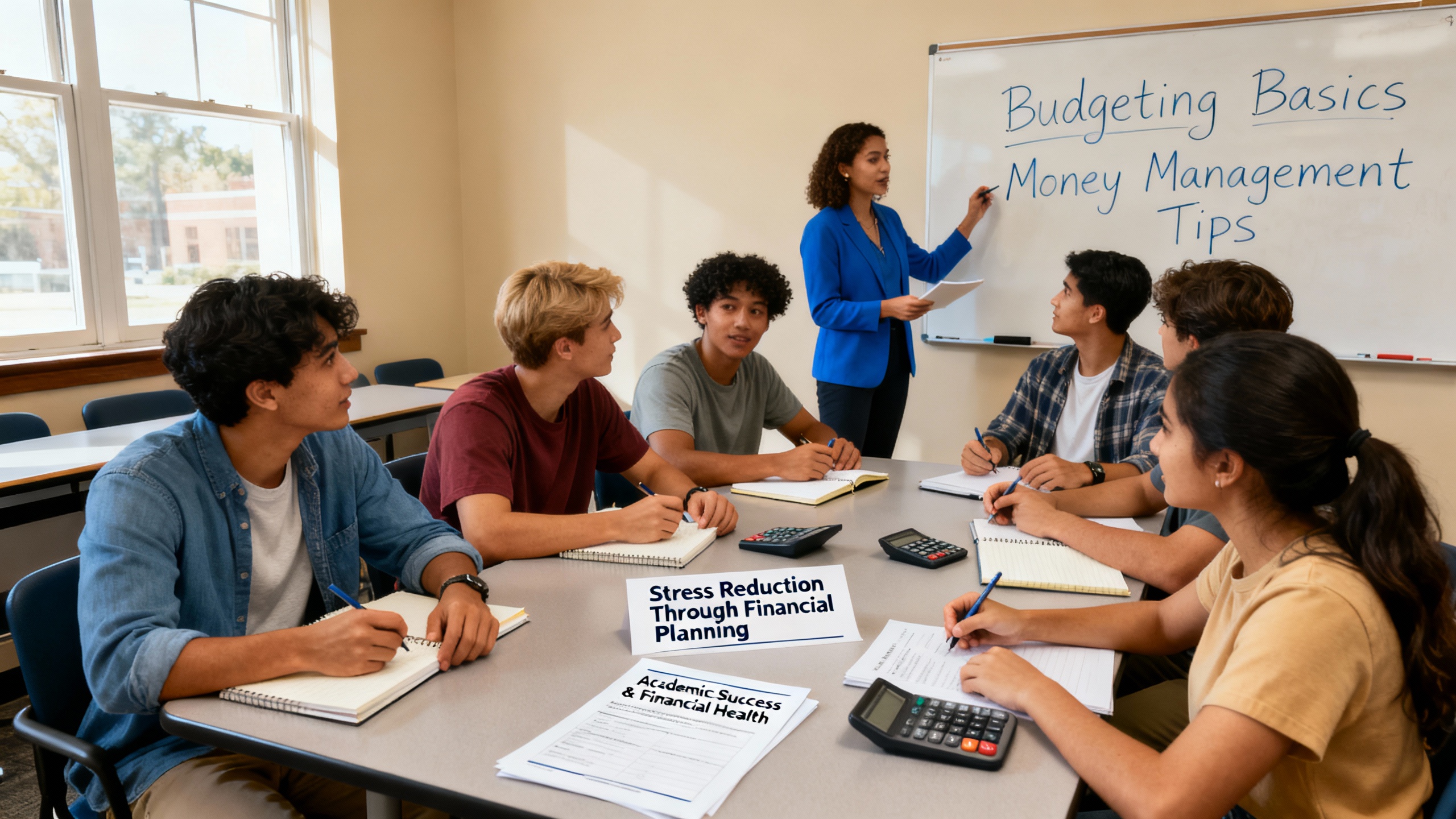Re-enrollment of stop out students involves bringing former students who left without completing a degree back to higher education. Effective strategies include debt forgiveness programs, flexible scheduling for working adults, targeted CRM-driven outreach, streamlined readmission processes, and maintaining ongoing connections with former students through alumni-style engagement approaches.
Introduction
Nearly 38 million Americans under age 65 have started college but left without earning a credential. For higher education institutions facing demographic pressures and enrollment challenges, this population of stop out students represents one of the most promising—and underutilized—growth opportunities available today.
The good news? More stop out students are returning to campus than ever before. During the 2023–24 academic year, over one million adults with some college but no credential re-enrolled in postsecondary education—the highest number ever recorded according to the National Student Clearinghouse Research Center [1]. This momentum signals that when institutions implement the right strategies, they can successfully re-engage students who once walked away.
Understanding the Stop-Out Population
The scope of the stop out students challenge is significant. Between January 2022 and July 2023, approximately 2.1 million students stopped out of college, though this represents a decline from previous years [1]. Despite promising re-enrollment trends, the overall population of working-age adults with some college and no credential continues to grow, increasing by 2.2% in the year ending July 2023 [1].
Stop-out students leave for diverse reasons. Financial pressures, family responsibilities, health crises, job demands, and academic struggles all contribute to temporary—or permanent—departures. Many face multiple competing priorities that make traditional enrollment models challenging to navigate.
The demographics reveal important patterns. Women comprise 59% of re-enrollees despite representing only a slightly larger share of the overall stop out students population [2]. Students who completed at least two years of full-time enrollment before stopping out—called "potential completers"—show higher rates of re-enrollment and credential completion [1].
Financial Barriers and Debt Forgiveness Solutions
One of the most significant obstacles stop out students face is institutional debt. An estimated 6.6 million students have “stranded credits”—academic credits they earned but cannot access due to unpaid balances and resulting transcript holds [4].
Progressive debt forgiveness programs are proving highly effective. The Ohio College Comeback Compact, launched in 2022, exemplifies this approach. The program allows eligible students who owe up to $5,000 in institutional debt to re-enroll at any of eight participating public colleges in Northeast Ohio [5]. Students who complete one semester receive $2,500 in debt forgiveness; completing a second semester earns an additional $2,500 [5].
During its pilot year, the Compact notified 9,109 eligible students and successfully re-enrolled 156 of them—students who would otherwise have been unable to continue their education [6]. The program forgave $135,000 in student balances while generating approximately $200,000 in tuition revenue, demonstrating positive return on investment for participating institutions [7].
State-level initiatives are expanding access as well. Massachusetts launched MassReconnect in August 2023, offering free community college to adults aged 25 and older. The state subsequently saw a 35.2% increase in re-enrollment—the highest growth rate nationally [8]. These programs prove that removing financial barriers drives meaningful results.
Campus leaders seeking evidence-based retention solutions should consider how debt forgiveness and financial support programs could unlock their own stop-out populations.
Flexible Modalities for Working Adults

Stop out students often return to college with vastly different circumstances than when they first enrolled. Many now work full-time, care for families, or manage complex schedules that make traditional on-campus programs impractical.
Community colleges remain the most popular destination for returning students. Nearly 60% of re-enrolling students with some college but no credential choose community colleges, including many who previously attended four-year institutions [1]. The appeal is clear: flexible schedules, lower costs, and accessible locations align with adult learner needs.
Primarily online institutions account for approximately 15% of all re-enrollments, disproportionately high compared to their share of the overall stop-out population [9]. This suggests that online modalities effectively serve students balancing education with work and personal obligations.
Successful re-engagement programs embrace flexibility through:
Evening and weekend course offerings
Accelerated or competency-based programs that recognize prior learning
Hybrid models combining online and in-person instruction
Year-round enrollment opportunities rather than rigid semester starts
Stackable credentials allowing students to earn certificates while progressing toward degrees
Institutions that adapt their delivery models to accommodate adult learners' realities significantly improve both re-enrollment and completion rates.
CRM-Driven Outreach and Nurturing Strategies
Technology enables institutions to maintain systematic, personalized connections with stopped-out students at scale. Customer Relationship Management (CRM) systems designed for higher education track interactions, segment populations, and automate targeted outreach while maintaining the human touch that makes re-engagement successful [10].
Effective CRM strategies for stop-out re-enrollment include:
Early Identification and Continuous Contact: Research shows that more than half of students who stop out return within one year [11]. Institutions should begin outreach immediately after departure, maintaining light contact through graduation-year cohort communications and alumni-style engagement.
Segmented Messaging: Not all stop-outs face identical barriers. CRM systems enable institutions to personalize communications based on factors like proximity to degree completion, financial circumstances, academic standing, and program of study. Potential completers—those with substantial credits already earned—warrant especially targeted outreach given their higher likelihood of completion [1].
Multi-Channel Communication: Successful re-engagement campaigns leverage email, text messaging, phone calls, and social media. Colleges using multiple touchpoints with clear, benefit-focused messaging see significantly higher response rates than those relying on single-channel outreach [12].
Dedicated Re-enrollment Advisors: The Ohio College Comeback Compact found that assigning specific staff to work with re-enrolling students throughout the financial aid application process substantially improved enrollment success [13]. These advisors remove administrative friction and provide encouragement during vulnerable decision points.
Data Analytics for Intervention: CRM platforms that integrate with Student Information Systems enable real-time monitoring of re-enrolled student engagement. Early alert capabilities help advisors intervene quickly when returning students show signs of disengagement [10].
Learn how data-driven engagement platforms support retention initiatives from first contact through graduation.
Streamlined Readmission Processes
Administrative complexity discourages stop out students from returning. Many face outdated contact information, confusion about credit transferability, and burdensome reapplication requirements.
Progressive institutions are simplifying these processes through:
Transcript Release and Transfer Policies: Some states have banned transcript withholding for unpaid balances, while others facilitate credential completion without formal re-enrollment. Colorado's Re-Engaged initiative allows public four-year institutions to award associate degrees to students who stopped out in the past decade if they completed 70 credit hours—even without re-enrolling [1].
Streamlined Reapplication: Rather than treating returning students as new applicants, leading institutions create expedited pathways that recognize their previous enrollment. Simplified processes reduce barriers and demonstrate institutional commitment to their success.
Prior Learning Assessment: Granting credit for knowledge gained through professional and life experience accelerates degree completion for adult learners, making the investment of returning to college more attractive [14].
Cross-Institutional Collaboration: The Ohio College Comeback Compact's innovation lies partly in allowing students to re-enroll at any participating institution, not just their original school. This flexibility acknowledges that students' lives and goals evolve, and the best fit institution may change over time [5].
Maintaining Alumni-Style Connections
The most forward-thinking institutions don't wait until students stop out to begin re-engagement—they maintain ongoing relationships that prevent permanent disconnection.
This approach involves:
Including former students in relevant campus communications and event invitations
Sharing success stories of returning students to normalize re-enrollment
Providing access to career services and learning resources even during enrollment gaps
Creating clear "comeback pathways" prominently featured on institutional websites
Celebrating returning students as valued community members rather than problem cases
Research from EAB found that students who re-enrolled after stopping out were more likely to graduate than not, even if they had been out for multiple years [11]. This underscores the value of persistent, respectful outreach.
Measurable Impact and Institutional Benefits

Beyond the moral imperative to support student success, re-engaging stop-outs delivers measurable institutional benefits.
The Ohio College Comeback Compact generated tuition receipts more than 25 times greater than forgone debt collections [15]. The 500 Compact-eligible students who returned generated nearly $1.6 million in tuition revenue [15]. What was previously a lose-lose situation—stranded students with uncollected debt—became mutually beneficial.
Forty-two states and the District of Columbia saw increases in re-enrollment in 2023-24 compared to the previous year [8]. This nationwide momentum suggests that institutions investing in re-engagement strategies are positioning themselves for sustainable enrollment growth despite demographic headwinds.
For students, completing their credentials transforms life outcomes. Workers with some college but no degree earn more than high school graduates but less than degree holders, leaving significant earnings potential unrealized. Re-enrollment offers a path to better careers, economic stability, and the personal satisfaction of achieving educational goals.
Implementing a Comprehensive Re-Engagement Strategy
Successful stop-out re-enrollment requires coordinated effort across multiple departments. Presidential leadership, registrar cooperation, financial aid flexibility, and dedicated advising resources must align around shared goals.
Institutions should:
Conduct a comprehensive audit of their stop-out population, identifying numbers, demographics, reasons for leaving, and proximity to completion
Evaluate institutional policies that create unnecessary barriers, particularly around debt collection and transcript release
Invest in CRM technology and staff training to enable sophisticated, personalized outreach at scale
Develop flexible program offerings that accommodate working adult learners
Create or join regional collaboratives to expand options for former students
Track and report re-enrollment metrics alongside traditional recruitment outcomes
Share success stories that inspire both potential and current students
The demographic cliff facing higher education makes stop-out re-enrollment not just an opportunity but a necessity. Institutions that develop robust capabilities to identify, reach, support, and retain returning students will strengthen their financial sustainability while fulfilling their educational mission.
Nearly 38 million adults invested time, money, and hope in higher education but didn't complete their journey. With strategic re-engagement approaches grounded in debt forgiveness, flexibility, personalized outreach, and streamlined processes, colleges can help millions achieve the credentials they started working toward—creating wins for students, institutions, and communities alike.
Works Cited
[1] National Student Clearinghouse Research Center — "Vast Majority of U.S. States See More Students Who Had Stopped Out of College Now Re-Enrolling." https://www.studentclearinghouse.org/news/vast-majority-of-us-states-see-more-students-now-re-enrolling/. Published: 2025-06-04. Accessed: 2025-10-24.
[2] Higher Ed Dive — "Here's a closer look at which stopped-out students are reenrolling in college." https://www.highereddive.com/news/heres-a-closer-look-at-which-stopped-out-students-are-reenrolling-in-colle/625253/. Published: 2022-06-21. Accessed: 2025-10-24.
[3] EducationDynamics — "Gaining Deeper Insights into Stopped-Out Students." https://www.educationdynamics.com/gaining-deeper-insights-into-stopped-out-students/. Published: 2023-10-17. Accessed: 2025-10-24.
[4] Inside Higher Ed — "Freeing stranded credits, helping students over a hurdle." https://www.insidehighered.com/news/students/financial-aid/2023/10/03/freeing-stranded-credits-helping-students-over-hurdle. Published: 2023-10-03. Accessed: 2025-10-24.
[5] Ohio College Comeback Compact — "Ohio College Comeback Compact." https://ohiocollegecomeback.org/. Published: 2025-07-02. Accessed: 2025-10-24.
[6] Georgetown University Feed — "'College comeback' program forgives debts so students can finish their degree." https://feed.georgetown.edu/access-affordability/college-comeback-program-forgives-debts-so-students-can-finish-their-degree/. Published: 2023-10-13. Accessed: 2025-10-24.
[7] Ithaka S+R — "After Successful Pilot, the Ohio College Comeback Compact Moves to Full Implementation." https://sr.ithaka.org/blog/after-successful-pilot-the-ohio-college-comeback-compact-moves-to-full-implementation/. Published: 2023-09-28. Accessed: 2025-10-24.
[8] University Business — "More stopped-out students are now re-enrolling in college." https://universitybusiness.com/more-stopped-out-students-are-now-re-enrolling-in-college/. Published: 2025-06-03. Accessed: 2025-10-24.
[9] National Student Clearinghouse Research Center — "Some College, No Credential." https://nscresearchcenter.org/some-college-no-credential/. Accessed: 2025-10-24.
[10] ConexED — "How CRM Systems Improve Student Retention in Higher Education." https://www.conexed.com/post/how-crm-systems-improve-student-retention-in-higher-education. Accessed: 2025-10-24.
[11] EAB — "What data shows about student stopout trends." https://eab.com/resources/blog/community-college-blog/student-stopout-trends/. Published: 2025-05-14. Accessed: 2025-10-24.
[12] EducationDynamics — "5 Things to Do Before You Launch a Stop-out Campaign." https://www.educationdynamics.com/5-things-to-do-before-you-launch-a-stopout-campaign/. Published: 2022-11-17. Accessed: 2025-10-24.
[13] EAB — "Fulfilling the Promise: Re-enrolling America's College Stopouts." https://navigate.utah.edu/_resources/documents/eab-stop-outs-white-paper.pdf. Accessed: 2025-10-24.
[14] Bipartisan Policy Center — "How Colleges Can Support Returning Stopout Students." https://bipartisanpolicy.org/blog/how-colleges-can-support-returning-stopout-students/. Accessed: 2025-10-24.
[15] Ithaka S+R — "Turning Debt into Credentials." https://sr.ithaka.org/blog/turning-debt-into-credentials/. Published: 2024-12-12. Accessed: 2025-10-24.
People Also Ask
Q1: Why do students stop out of college?
Students stop out for diverse reasons including financial pressures, family responsibilities, employment demands, health crises, and academic challenges. Many face multiple competing priorities simultaneously. Financial strain remains a leading factor, with students unable to cover tuition, housing, or basic needs. Life changes like becoming a parent, caring for family members, or accepting full-time employment also contribute. Additionally, students may struggle academically or feel disconnected from campus community, leading them to pause their education temporarily or permanently. (68 words)
Q2: What is the difference between a dropout and a stop-out?
The term "stop-out" implies a temporary pause with intention to return, while "dropout" suggests permanent departure. However, in practice these distinctions blur because institutions rarely know students' true intentions. For re-engagement purposes, higher education professionals typically treat all former students who left without credentials as potential stop-outs worthy of outreach. Research shows that over half of students who stop out return within one year when institutions maintain contact and offer appropriate support, making the optimistic "stop-out" framing both accurate and actionable. (66 words)
Q3: How successful are debt forgiveness programs for re-enrollment?
Debt forgiveness programs demonstrate strong success and positive return on investment. The Ohio College Comeback Compact, offering up to $5,000 in debt forgiveness, successfully re-enrolled 156 students during its pilot year—students who otherwise couldn't continue their education. The program forgave $135,000 in balances while generating approximately $200,000 in tuition revenue, creating a 10:1 return. Massachusetts' MassReconnect program contributed to a 35.2% increase in state re-enrollment. These results show that removing financial barriers through strategic debt relief effectively unlocks stop-out populations while benefiting institutions financially. (69 words)
Q4: What percentage of stopped-out students return to college?
Overall, approximately 2-3% of the some college, no credential population re-enrolls annually. However, this rate varies significantly by context. More than half of students who stop out return within one year when institutions maintain proactive outreach. During the 2023-24 academic year, over one million adults with some college but no credential re-enrolled—the highest number ever recorded. Students with at least two years of full-time enrollment before stopping out (potential completers) show substantially higher re-enrollment rates than those with minimal credits, suggesting targeted outreach to near-completers yields better results. (64 words)
Q5: Do re-enrolled stop-out students actually graduate?
Yes, research shows that students who re-enroll after stopping out are more likely to graduate than not, even after years away. Among re-enrolled students in the some college, no credential population, nearly 59% persisted into their second year of re-enrollment. Additionally, potential completers who return demonstrate higher completion rates than average students. The key factors for success include adequate financial support, flexible scheduling that accommodates adult learner responsibilities, dedicated advising for returning students, and institutional commitment to their completion. These findings underscore that stop-out re-engagement represents a viable retention strategy with strong completion outcomes.




